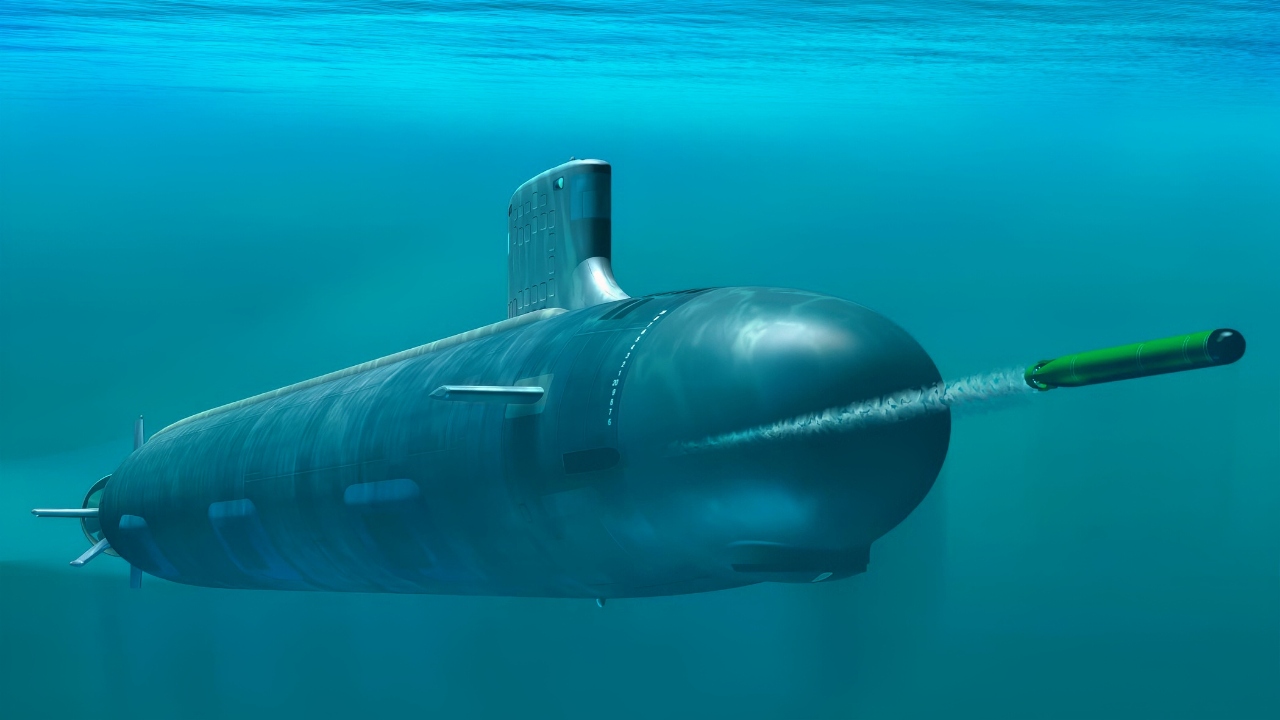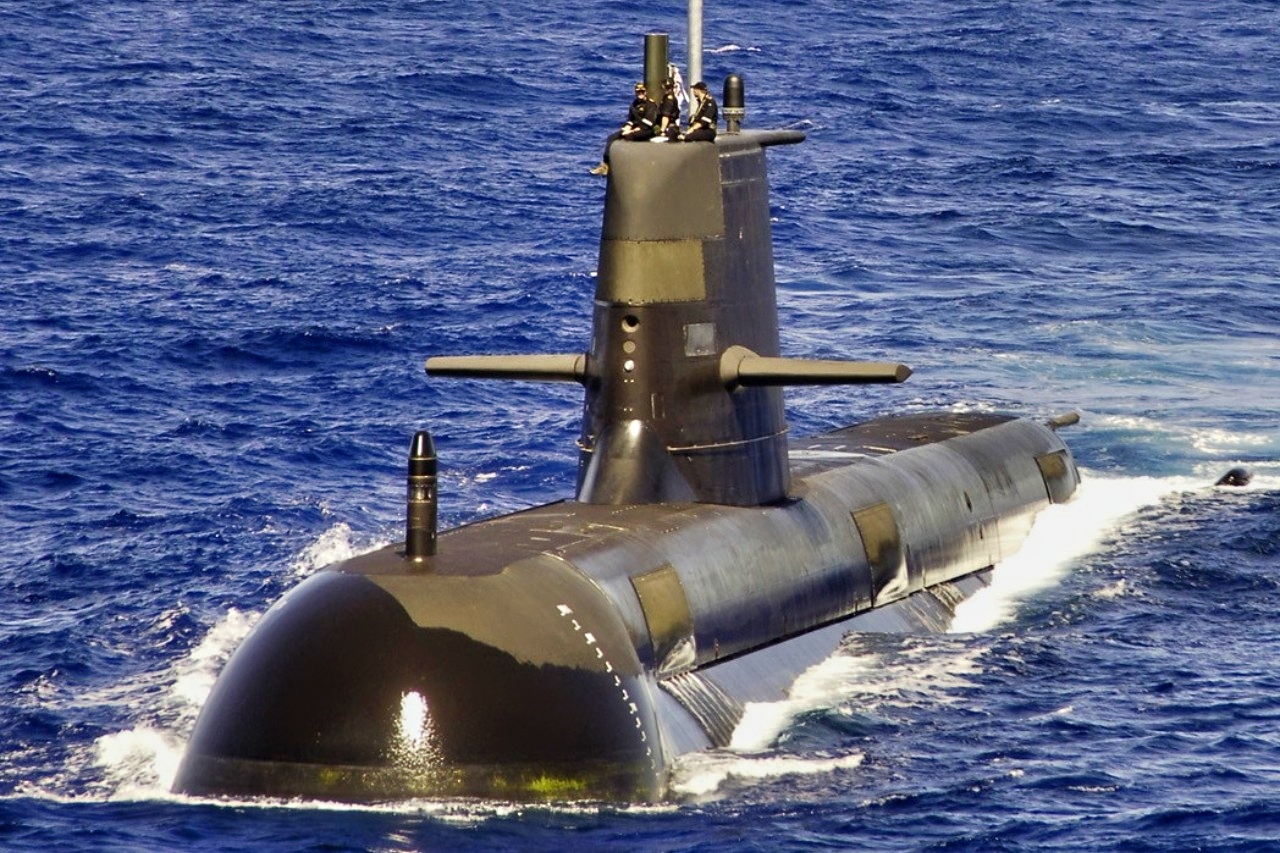Key Points and Summary – Australia’s jump to AUKUS nuclear-powered submarines is rooted in the Collins class’s limits: an aging, conventional fleet with a long history of noise, combat-system bugs, engine woes, corrosion, and low availability—now kept afloat by life-extension while the Indo-Pacific grows more dangerous.
-AUKUS promises three U.S. Virginia-class boats and a new British-led SSN-AUKUS design blending U.S./U.K./Australian tech (nuclear propulsion, VLS, advanced weapons). But production is the choke point: just two U.S. yards already struggle to meet U.S. demand, and U.K. timelines are tight.

SSN-AUKUS. Image Credit: Creative Commons.
-That fuels debate over stopgaps—accelerated Collins upkeep, more unmanned systems, Pillar Two tech (UAS, EW, AI, hypersonics), even a French Suffren buy. The payoff of SSNs—stealth, speed, range, persistent surveillance and deterrence—fits Australia’s geography.
-The risk is timing: can the U.S. and U.K. scale output fast enough to avoid a capability trough as Collins ages? The answer will shape deterrence, alliance credibility, and undersea balance across the first island chain and beyond.

SSN 774 Virginia Class Submarine Artist Rendering from U.S. Navy.
Why Australia Needs AUKUS Nuclear Submarines Now
Australia’s decision to join AUKUS and acquire nuclear-powered submarines is directly linked to the operational failures and strategic limitations of its current Collins-class submarine fleet.
While initial problems with the Collins class have been mostly resolved, its age and conventional propulsion are considered barely adequate for Australia’s long-term security needs in the Indo-Pacific.
Meet The Collins-class Submarines
The Collins-class submarines are a fleet of six diesel-electric submarines built for the Royal Australian Navy by Kockums and the Australian Submarine Corporation (ASC).
Designed for stealth and surveillance, these Type 471 submarines are 77.8 meters long and 7.8 meters wide, displacing over 3,400 tons while submerged.
Built with advanced technology for stealth and endurance in Australia’s waters, they feature a high-performance hull and automated controls, using batteries charged by diesel generators. They are powered by a Jeumont-Schneider DC motor (7,200 hp or 5,400 kW), driving 1 × seven-bladed, 4.22 m (13.8 ft) diameter skewback propeller.
They have a top speed of 10 knots, or 12 mph, while on the surface or at periscope depth, and a speed of 20 knots, or 23 mph, submerged. Its range was 11,500 nautical miles (13,200 miles) at 10 knots (12 mph) surfaced, 9,000 nmi (10,000 miles) at 10 knots (12 mph) at periscope depth, and 480 nmi (550 mi) at 4 knots (4.6 mph) submerged.
Armament for the Collins-class consists of 6 × 21-inch (530 mm) bow torpedo tubes, with 22 torpedoes, a mix of Mark 48 Mod 7 CBASS torpedoes, UGM-84C Sub-Harpoon anti-ship missiles, or 44 Stonefish Mark III mines.
The Giant Headache Of the Collins Submarines
The Collins class was an ambitious foray into the realm of submarines. Australia sought to establish a regionally dominant submarine force that could protect its shores and support its allies. It didn’t work out that way.
Granted, over the past ten years, the submarines have performed as intended, in line with their initial design. But for most of the 20 years before that, they were a nightmare, not for Australia’s enemies, but for its navy.
They had suffered from many of the same factors that afflict all new weapons programs. Cost overruns, scheduling delays, and a myriad of technical issues plagued the submarines from Day 1. All of this took time and money to fix.
Recommendations were made, but not followed, on how to address the numerous issues. Finally, after many years of headaches and a press prone to calling them “Dud Subs,” another study found that the problem wasn’t the submarines, which were fundamentally sound, but the system put in place to support them wasn’t fit for purpose. They also found that everyone wanted to fix the problem, but nobody agreed on what the causes of the issue were.
These issues have included excessive noise, combat system failures, engine unreliability, and construction defects. As of late 2024 and early 2025, the fleet has been experiencing widespread hull corrosion and low availability rates.
The American-supplied combat system was a significant source of issues early on. It was described as unreliable and filled with software bugs. Problems included: An inability to track multiple targets simultaneously. The system is crashing completely during exercises. Poor integration of the submarine’s sensors and weapons. It was a flawed design that never functioned properly, requiring replacement.
Despite initial technical issues and ongoing corrosion problems, they remain just competent for their role in two-ocean surveillance, with the fleet currently undergoing a life-of-type extension to maintain availability as Australia transitions to nuclear-powered submarines (AUKUS).
The Aussies Need The AUKUS, But That Has Issues Of Its Own
The US sale of Virginia-class submarines to Australia under the AUKUS agreement is facing significant challenges due to the US Navy’s current production capacity and its own submarine needs.
There are currently only two shipyards that build the U.S. Navy’s Virginia-class nuclear-powered attack submarines: one in Groton, Connecticut, and the other in Newport News, Virginia.
The shipyard in Connecticut builds only submarines, while Newport News also builds aircraft carriers and other surface ships.
These submarines are critical to American national security strategy in the Indo-Pacific, where the U.S. Navy must protect the shipping lanes and freedom of navigation against a rapidly expanding and increasingly aggressive Chinese Navy (PLAN).
While the US is committed to providing Australia with nuclear-powered submarines, the current production rate of Virginia-class submarines is insufficient to meet both the US Navy’s requirements and the AUKUS commitment.
This has led to uncertainty and concerns about whether the US can fulfill its promise to Australia. How can the US honor the agreement with Australia while meeting its own needs, considering its production issues?
What Are The Details of The AUKUS Agreement
The AUKUS agreement promises to revolutionize Australia’s submarine fleet. It includes three US-built Virginia-class nuclear-powered submarines and the future development of the SSN-AUKUS.
This move angered China. Chinese Foreign Ministry spokeswoman Mao Ning told reporters in Beijing that the three countries should “do more things that are conducive to regional peace and stability,” Bloomberg reported. Considering China’s actions in the region, that is rich.
The US and UK Royal Navy (RN) will collaborate with the Australian Navy. Australia’s nuclear-powered submarines will be based on a British design and incorporate technology from all three nations.
These will be the most advanced attack submarines developed for the Royal Navy and the first nuclear-powered submarines for the Royal Australian Navy. They will integrate U.S. technology, including nuclear propulsion, vertical launch missile systems (VLS), and advanced weaponry.
The introduction of the Virginia-class submarines will help Australia bridge the capability gap in nuclear propulsion following the future retirement of its six Collins-class attack submarines.
The future SSNs should be easier, quicker, and cheaper to build and maintain. They will incorporate the improvements achieved over the evolution of the Virginia, Columbia, Collins, and Dreadnought class submarine designs, possibly including electric propulsion, and X configuration after control surfaces.
Building the subs in British and Australian shipyards will boost jobs and ease the strain on the already backed-up US shipyards. This will enhance the South Pacific alliance and bolster each nation’s submarine capabilities, as China is increasingly acting with aggression and intimidation in the Indo-Pacific, particularly in the First Island Chain.
Can The US and the UK Keep Up With The Demand? Doubtful
Unless things change radically and soon, neither the US nor the UK will be able to meet their requirements under the AUKUS agreements. Neither can build enough submarines to meet their own requirements, never mind Australia’s.
Rear Admiral Peter Briggs (ret) of the Australian Navy suggests in a piece in War on the Rocks to look at the French Suffren submarines, and makes a compelling case to buy those.
Other ideas consider canceling Pillar One of AUKUS and proceeding directly to Pillar Two, which would include maintaining the aging Collins boats and investing in unmanned systems, AI, quantum computer science, and hypersonic weapons. These technologies could deliver capabilities that provide some of the benefits offered by the Virginia-class subs.
However, the legacy of the flawed Collins-class program and the strategic limitations of its conventional propulsion highlighted Australia’s need for a more advanced submarine fleet. AUKUS provides a pathway to acquire nuclear-powered submarines, offering the range, speed, and strategic deterrence necessary for Australia’s long-term security in a contested Indo-Pacific.
If (and it’s a big if) the US and UK can increase their production to meet the needs of all three countries.
About the Author: Steve Balestrieri
Steve Balestrieri is a National Security Columnist. He served as a US Army Special Forces NCO and Warrant Officer. In addition to writing on defense, he covers the NFL for PatsFans.com and is a member of the Pro Football Writers of America (PFWA). His work was regularly featured in many military publications.
More Military
Canada Is ‘Full Steam Ahead’ on F-35 Stealth Fighter
Why Does Turkey Have So Many Main Battle Tanks?
‘Cracked Barrels’: The U.S. Navy’s Big Railgun Failure Explained in Just 2 Sad Words
‘Had No Chance’: The Montana-Class Was the 71,000-Ton Battleship Destined to Fail
‘Captain, We Smacked It Another Submarine’: British and French Nuclear Missile Subs Collided










